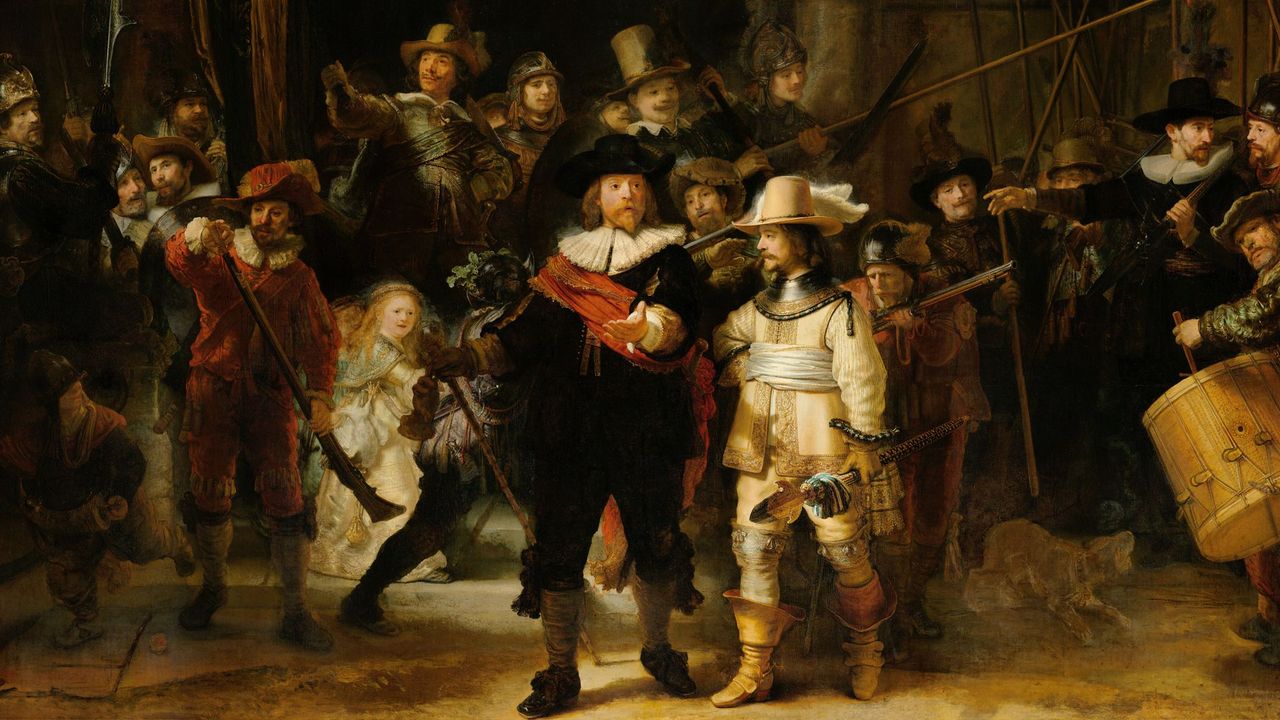The Art of C4rdinal: Tension, Control, and the Fracturing of Modern Institutions
by Carlo Borloni
In the landscape of contemporary art, few artists so skillfully balance societal critique and technological innovation as Cardinal (b. 1990).
A multidisciplinary artist known for his use of glitch art, C4rdinal explores themes of tension, control, and the inherent instability of the institutional world.
His work taps into the fractured nature of modern life, using digital distortions to challenge viewers' perceptions of familiar subjects.
ALL PATHS, C4rdinal
By juxtaposing modern glitch aesthetics with historical artistic traditions, C4rdinal invites his audience to reflect on the complexities of power, the frailty of institutions, and the relationship between chaos and order.
His influences, which include artists such as Clyfford Still, Robert Rauschenberg, Rembrandt, and Raphael, ground his practice in a rich historical context while pushing the boundaries of contemporary visual expression.
Early Life, Institutional Influence, and Artistic Development
C4rdinal's artistic journey is deeply rooted in his personal experiences within large institutions.
Having worked in fields such as finance, education, and government, he became acutely aware of the inefficiencies and bureaucratic structures that often prioritize power over purpose.
This experience shaped his understanding of institutional tension, and this theme is woven into much of his work.
DO YOU REMEMBER, C4rdinal
C4rdinal has described his experiences as fuel for a “rage against the machine,” a form of rebellion against systems that are supposed to serve but often suppress individual innovation and purpose.
His work does not merely critique these institutions; it captures the emotional and psychological pressure of living within them.
This focus on personal and societal tension aligns C4rdinal with historical figures like Clyfford Still, who famously rebelled against art institutions to maintain the purity of his vision.
PH-1123, Clyfford Still
Still's work, known for its raw expression of jagged forms and deep emotional undercurrents, is mirrored in C4rdinal's glitch art, which similarly conveys a sense of unresolved tension and fractured reality.
Historical Influences: From Rauschenberg to Raphael
While C4rdinal's glitch art is rooted in the digital age, his work is deeply influenced by a range of historical artists who span vastly different periods and styles.
IN NEBULOUS, C4rdinal
The most prominent influences he cites, Clyfford Still, Robert Rauschenberg, Rembrandt, and Raphael, are key to understanding the layered complexity of his art.
Robert Rauschenberg, a pioneer of mixed media and assemblage art, is perhaps the closest historical parallel to C4rdinal's blending of unexpected elements.
Rauschenberg's works, such as his Combines, which incorporated everyday objects into traditional painting, pushed the boundaries of what art could be.
Similarly, C4rdinal's glitch art combines the digital and physical worlds, layering distorted pixels over traditional imagery to blur the line between control and chaos.
Both artists challenge the viewer to look beyond the surface, urging reflection on the systems and structures underlying modern life.
C4rdinal's use of light and composition, meanwhile, reflects the influence of old masters like Rembrandt and Raphael.
Rembrandt's iconic chiaroscuro technique, which masterfully contrasts light and shadow to create depth and emotion, finds echoes in C4rdinal's works, where digital "light" and "shadow" distortions give his pieces a sense of movement and unpredictability.

The Night Watch, Rembrandt
Raphael, known for his harmonious compositions and careful attention to balance and order, contrasts with C4rdinal's more chaotic, fractured visuals, yet the classical influence is evident in Cardinal's careful control of composition within his digital distortions.
Chaos and Order: The Aesthetics of Glitch
One of the most striking features of C4rdinal's work is his ability to navigate the delicate balance between chaos and order.
This tension is evident in his use of glitch art, a medium that inherently exposes the instability and fragility of modern systems.
Digital glitches, often seen as errors or disruptions, are used by C4rdinal to reveal deeper truths about the systems that govern our lives, whether they are political, social, or technological.
CORSI E RECORSI, C4rdinal
His most recent collection, HIGHER POWER, exemplifies this exploration of chaos and control.
In these works, C4rdinal plays with the unpredictability of glitch to disrupt conventional forms, inviting the viewer to engage with the instability of the world around them.
His process is both instinctive and deliberate; he begins with a core concept, allowing the work to evolve naturally as glitches appear, adjusting and refining the distortions to emphasize key elements.
In doing so, he creates a visual metaphor for the fragility of institutions, systems that, much like digital infrastructures, can easily break down.
C4rdinal's exploration of chaos recalls the work of abstract expressionists such as Jackson Pollock, who famously embraced spontaneity and unpredictability in his drip paintings.
.jpg)
Untitled (Orange Head), Jackson Pollock
While Pollock's chaotic splatters encouraged viewers to engage with the raw emotion of the piece, C4rdinal's glitch distortions similarly demand close examination.
The breakdown of familiar imagery forces viewers to question their assumptions and reexamine their relationship with the systems in place.
Nature, Technology, and Cultural Critique
Another important aspect of C4rdinal's work is his juxtaposition of nature and modern culture.
Nature, in his art, often serves as a grounding element, contrasting with the artificiality and instability of the digital glitches that fracture his imagery.
In pieces like Do You Remember, nature appears in the form of windmills, a familiar, pastoral symbol, only to be distorted and politicized.
The windmills, initially a light-hearted reference, become symbols of political dysfunction and stagnation, reflecting the broader cultural and environmental crisis of our times.
SAVE IT TO THE CLOUD
In C4rdinal's HIGHER POWER collection, nature is again used to contrast the synthetic chaos of modern institutions. The tension between the organic and the technological reflects a broader societal anxiety about the direction of human progress.
By grounding his work in the imagery of nature, C4rdinal invites viewers to reflect on what has been lost in the pursuit of power and control, and to consider how a return to more natural, balanced systems might offer solutions to the chaos of contemporary life.
This tension between the natural and the artificial mirrors the concerns of environmental artists such as the Hudson River School, whose idyllic landscapes often served as critiques of industrialization.

Home in the woods, Thomas Cole
Just as Thomas Cole and his contemporaries sought to preserve the untouched beauty of nature in the face of encroaching industrialization, C4rdinal uses the imagery of nature to critique modern culture's abandonment of the organic in favor of the artificial.
Conclusion: Cardinal's Contribution to Contemporary Art
JESUS TAKE MY BAGS, C4rdinal
C4rdinal's art stands at the intersection of technology, critique, and historical influence. His ability to blend the digital distortions of glitch art with classical artistic traditions creates a rich, layered visual experience that challenges viewers to rethink their relationship with modern institutions and societal structures.
By drawing from historical figures such as Clyfford Still, Robert Rauschenberg, Rembrandt, and Raphael, C4rdinal situates his work within a broader artistic dialogue while pushing the boundaries of glitch art as a medium for societal critique.
Through his exploration of tension, control, and the delicate balance between chaos and order, C4rdinal's art captures the fractured reality of the contemporary world.
His works ask important questions about the stability of our systems and the cost of the pursuit of power, making his contribution to the art world both timely and thought-provoking.
Sign up for our newsletter to keep up with the latest news from NINFA
Sign up for our newsletter to keep up with the latest news from NINFA
Write us at: info@ninfa.io, or click here if you need support
Copyright © 2025 Ninfa Labs - 12094240962 - All rights reserved

